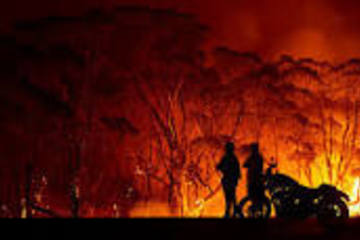Browse
Posted on: #iteachmsu

DISCIPLINARY CONTENT
Description is the pattern of narrative development that aims to make vivid a place, object, charact
Description is the pattern of narrative development that aims to make vivid a place, object, character, or group. Description is one of four rhetorical modes, along with exposition, argumentation, and narration. In practice it would be difficult to write literature that drew on just one of the four basic modes.
Authored by:
Description is the pattern of narrative development that ...

Posted on: #iteachmsu


Description is the pattern of narrative development that aims to make vivid a place, object, charact
Description is the pattern of narrative development that aims to ma...
Authored by:
DISCIPLINARY CONTENT
Monday, Sep 14, 2020
Posted on: #iteachmsu

ASSESSING LEARNING
Description is the pattern of narrative development that aims to make vivid a place, object, charact
Description is the pattern of narrative development that aims to make vivid a place, object, character, or group. Description is one of four rhetorical modes, along with exposition, argumentation, and narration. In practice it would be difficult to write literature that drew on just one of the four basic modes.
Authored by:
Malen brando Shel

Posted on: #iteachmsu


Description is the pattern of narrative development that aims to make vivid a place, object, charact
Description is the pattern of narrative development that aims to ma...
Authored by:
ASSESSING LEARNING
Monday, Sep 14, 2020
Posted on: #iteachmsu

DISCIPLINARY CONTENT
Description is the pattern of narrative development that aims to make vivid a place, object, charact
Description is the pattern of narrative development that aims to make vivid a place, object, character, or group. Description is one of four rhetorical modes, along with exposition, argumentation, and narration. In practice it would be difficult to write literature that drew on just one of the four basic modes.
Authored by:
Maleon Brando

Posted on: #iteachmsu


Description is the pattern of narrative development that aims to make vivid a place, object, charact
Description is the pattern of narrative development that aims to ma...
Authored by:
DISCIPLINARY CONTENT
Monday, Sep 14, 2020
Posted on: #iteachmsu

Global burden of dengue
The incidence of dengue has grown dramatically around the world in recent decades. A vast majority of cases are asymptomatic or mild and self-managed, and hence the actual numbers of dengue cases are under-reported. Many cases are also misdiagnosed as other febrile illnesses [1].
One modelling estimate indicates 390 million dengue virus infections per year (95% credible interval 284–528 million), of which 96 million (67–136 million) manifest clinically (with any severity of disease) [2]. Another study on the prevalence of dengue estimates that 3.9 billion people are at risk of infection with dengue viruses. Despite a risk of infection existing in 129 countries [3], 70% of the actual burden is in Asia [2].
The number of dengue cases reported to WHO increased over 8 fold over the last two decades, from 505,430 cases in 2000, to over 2.4 million in 2010, and 4.2 million in 2019. Reported deaths between the year 2000 and 2015 increased from 960 to 4032.
This alarming increase in case numbers is partly explained by a change in national practices to record and report dengue to the Ministries of Health, and to the WHO. But it also represents government recognition of the burden, and therefore the pertinence to report dengue disease burden. Therefore, although the full global burden of the disease is uncertain, this observed growth only brings us closer to a more accurate estimate of the full extent of the burden.
One modelling estimate indicates 390 million dengue virus infections per year (95% credible interval 284–528 million), of which 96 million (67–136 million) manifest clinically (with any severity of disease) [2]. Another study on the prevalence of dengue estimates that 3.9 billion people are at risk of infection with dengue viruses. Despite a risk of infection existing in 129 countries [3], 70% of the actual burden is in Asia [2].
The number of dengue cases reported to WHO increased over 8 fold over the last two decades, from 505,430 cases in 2000, to over 2.4 million in 2010, and 4.2 million in 2019. Reported deaths between the year 2000 and 2015 increased from 960 to 4032.
This alarming increase in case numbers is partly explained by a change in national practices to record and report dengue to the Ministries of Health, and to the WHO. But it also represents government recognition of the burden, and therefore the pertinence to report dengue disease burden. Therefore, although the full global burden of the disease is uncertain, this observed growth only brings us closer to a more accurate estimate of the full extent of the burden.
Authored by:
WHO Organization

Posted on: #iteachmsu


Global burden of dengue
The incidence of dengue has grown dramatically around the world in ...
Authored by:
Monday, Sep 14, 2020
Posted on: #iteachmsu

Dengue and severe dengue
Key facts
Dengue is a mosquito-borne viral infection.
The virus responsible for causing dengue, is called dengue virus (DENV). There are four DENV serotypes, meaning that it is possible to be infected four times.
Severe dengue is a leading cause of serious illness and death in some Asian and Latin American countries. It requires management by medical professionals.
While many DENV infections produce only mild illness, DENV can cause an acute flu-like illness. Occasionally this develops into a potentially lethal complication, called severe dengue.
There is no specific treatment for dengue/severe dengue. Early detection of disease progression associated with severe dengue, and access to proper medical care lowers fatality rates of severe dengue to below 1%.
Dengue is found in tropical and sub-tropical climates worldwide, mostly in urban and semi-urban areas.
Dengue is a mosquito-borne viral infection.
The virus responsible for causing dengue, is called dengue virus (DENV). There are four DENV serotypes, meaning that it is possible to be infected four times.
Severe dengue is a leading cause of serious illness and death in some Asian and Latin American countries. It requires management by medical professionals.
While many DENV infections produce only mild illness, DENV can cause an acute flu-like illness. Occasionally this develops into a potentially lethal complication, called severe dengue.
There is no specific treatment for dengue/severe dengue. Early detection of disease progression associated with severe dengue, and access to proper medical care lowers fatality rates of severe dengue to below 1%.
Dengue is found in tropical and sub-tropical climates worldwide, mostly in urban and semi-urban areas.
Authored by:
Chathu

Posted on: #iteachmsu


Dengue and severe dengue
Key facts
Dengue is a mosquito-borne viral infection.
The virus re...
Dengue is a mosquito-borne viral infection.
The virus re...
Authored by:
Monday, Sep 14, 2020
Posted on: #iteachmsu

DISCIPLINARY CONTENT
Timing and Scheduling Accommodations
Descriptions:
The educator identifies one timing and scheduling accommodation for a student with a disability based on his or her individual learning strengths and needs and the barrier created by the disability.
Introduction
The educator uses a set of guiding questions to identify one timing and scheduling accommodation for a student with a disability based on his or her individual learning strengths and needs and the barrier created by the disability. The educator then implements the accommodation and evaluates its effectiveness.
Key Method Components
This micro-credential, one of four in the Accommodations stack, addresses timing and scheduling accommodations. These micro-credentials are consistent with the Individuals with Disabilities Education Improvement Act (IDEA) requirements, and are therefore relevant to students in grades K-12 with disabilities.
Educators should understand that students with disabilities often encounter barriers when they access the general education curriculum. The Every Student Succeeds Act (ESSA) and the Individuals with Disabilities Education Improvement Act (IDEA) require that educators provide appropriate accommodations to students with disabilities to address these barriers. Careful consideration of a student’s strengths and needs can help guide the identification and selection of an accommodation that is likely to benefit a student.
The educator identifies one timing and scheduling accommodation for a student with a disability based on his or her individual learning strengths and needs and the barrier created by the disability.
Introduction
The educator uses a set of guiding questions to identify one timing and scheduling accommodation for a student with a disability based on his or her individual learning strengths and needs and the barrier created by the disability. The educator then implements the accommodation and evaluates its effectiveness.
Key Method Components
This micro-credential, one of four in the Accommodations stack, addresses timing and scheduling accommodations. These micro-credentials are consistent with the Individuals with Disabilities Education Improvement Act (IDEA) requirements, and are therefore relevant to students in grades K-12 with disabilities.
Educators should understand that students with disabilities often encounter barriers when they access the general education curriculum. The Every Student Succeeds Act (ESSA) and the Individuals with Disabilities Education Improvement Act (IDEA) require that educators provide appropriate accommodations to students with disabilities to address these barriers. Careful consideration of a student’s strengths and needs can help guide the identification and selection of an accommodation that is likely to benefit a student.
Posted by:
Chathuri Hewapathirana

Posted on: #iteachmsu


Timing and Scheduling Accommodations
Descriptions:
The educator identifies one timing and schedul...
The educator identifies one timing and schedul...
Posted by:
DISCIPLINARY CONTENT
Monday, Sep 14, 2020
Posted on: #iteachmsu

DISCIPLINARY CONTENT
Bicycle city
Projects
Bicycle city was to be a planned , car -free community project with a mission to create sustainable places where people can live , work and visit. Parking is planned to be on the edge of the community near people's home .However the project has since been abandoned .
Bicycle city was to be a planned , car -free community project with a mission to create sustainable places where people can live , work and visit. Parking is planned to be on the edge of the community near people's home .However the project has since been abandoned .
Authored by:
Wiki

Posted on: #iteachmsu


Bicycle city
Projects
Bicycle city was to be a planned , car -free community pr...
Bicycle city was to be a planned , car -free community pr...
Authored by:
DISCIPLINARY CONTENT
Friday, Sep 11, 2020
Posted on: #iteachmsu

Development Tools
MSU IT offers a number of valuable tools and services that can help you create an experience that facilitates student success regardless of bandwidth, time zones, or class size. To make an appointment with an instructional technologist, fill out the appointment form located at https://tech.msu.edu/service-catalog/teaching/instructional-design-development/ or e-mail the MSU IT Service Desk at ithelp@msu.edu and request a consultation with Instructional Technology and Development. If you prefer the phone, you can also contact them at (517)432-6200.
Authored by:
Berry, R. W. (2009). Meeting the challenges of teaching l...

Posted on: #iteachmsu


Development Tools
MSU IT offers a number of valuable tools and&nb...
Authored by:
Friday, Sep 11, 2020

